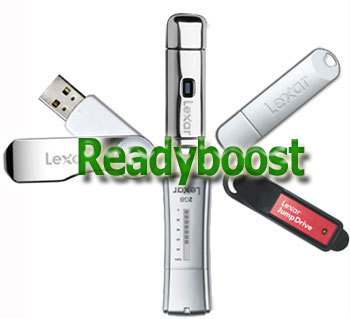

- #What is readyboost flash drive how to
- #What is readyboost flash drive portable
- #What is readyboost flash drive software
Right click on the USB flash drive disk icon that is running ReadyBoost, and select Properties.It allows NAND memory mass storage devices like USB flash drive to be used as a memory cache to improve computing performance.
#What is readyboost flash drive software
ReadyBoost (codename EMD) is a disk caching software component developed by Microsoft, provided in Windows Vista and later versions of Windows. Buy on Amazon: 4: SanDisk 128GB Cruzer USB 2.0 9.75. Alternatively, you can also use USB as RAM by employing ReadyBoost.
#What is readyboost flash drive portable
Buy on Amazon: 3: WD 2TB Elements Portable External 8.30.

Buy on Amazon: 2: SamData 32GB USB Flash Drives 9.10.
#What is readyboost flash drive how to
We described thoroughly how to activate ReadyBoost, as well as clearly noted that ReadyBoost does not offer a significant performance boost. ReadyBoost enables NAND memory mass storage CompactFlash, SD card, and USB flash drive devices to be used as a cache between the hard drive and. In a previous article we described what Readyboost is a disk caching technology introduced in Vista that allows use of a USB flash drive or SD, MMC and TF cards as added virtual RAM for your computer. How to Turn Off and Reclaim Disk Space Used by ReadyBoost ReadyBoost (codenamed EMD) is a disk caching software component developed by Microsoft for Windows Vista and included in later versions of Windows. But if a user wants to use the USB flash drive to save and store other data, they can easily disable or turn off ReadyBoost, and reclaim the disk space occupied by ReadyBoost.sfcache. When a user inserts a ReadyBoost compatible USB flash drive and selects Speed up my system from the autoplay menu, Windows Vista or Windows 7 will automatically reserve and allocated memory space for ReadyBoost by creating a ReadyBoost Cache File named ReadyBoost.sfcache. Flash devices typically are slower than a hard disk for sequential I/O so, to maximize performance, ReadyBoost includes logic that recognizes large, sequential read requests and has the hard disk service these requests. Thus, putting fast flash memory on SATA alone is enough of a win to say definitively that it will be faster.

This caching applies to all disk content, not just the page file or system DLL. Answer: One major difference is that ReadyBoost is limited to USB 2.0 bandwidth (unless your computer has the ultra-rare and extremely bleeding edge USB 3.0), whereas the hard drive is on the much, much faster SATA interface. Using a ReadyBoost-capable flash memory for caching allows Windows 7 and Vista to service random disk reads with performance that is typically 80-100 times faster than random reads from traditional hard drives. I think the improvement I'm seeing is due to the faster Mushkin USB 3 flash drive. It allows a system to boost its performance by adding extra cache memory in the form of flash memory. With the Flash Drive ReadyBoost Cache (this USB 3 flash drive is fast up to 120MB/sec read compared to a standard USB 2 flash drive at 25MB/sec read) I have noticed much less HD activity and faster response times. Windows Vista and Windows 7 has a disk caching feature known as ReadyBoost.


 0 kommentar(er)
0 kommentar(er)
